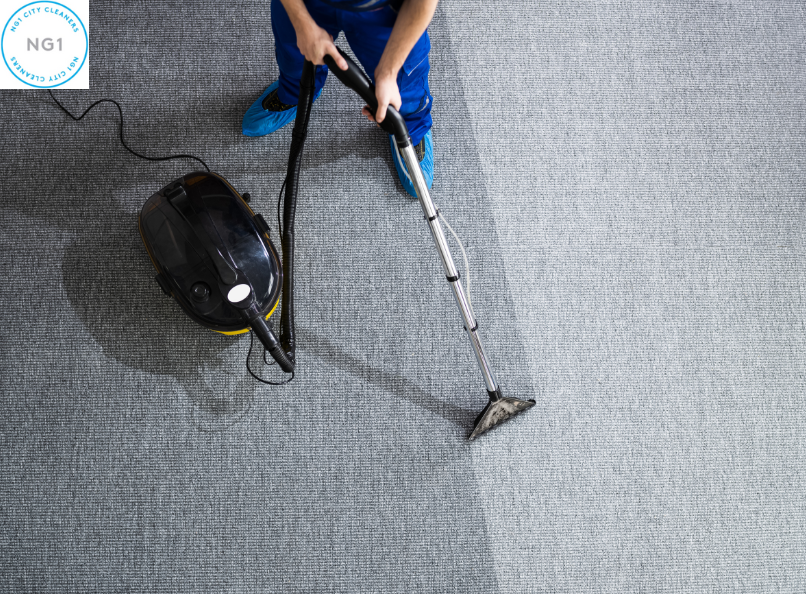
How to Stop Clothes Shrinking in The Tumble Dryer

How to Prevent Clothes from Shrinking in the Tumble Dryer: Complete UK Guide 2025
Last updated: June 2025 | Reading time: 8 minutes
Discovering your favourite jumper has transformed into doll-sized clothing after a tumble dry cycle is every UK homeowner's worst nightmare. With energy costs soaring and Britain's unpredictable weather making outdoor drying increasingly challenging, mastering proper tumble dryer techniques has become essential for households across the country.
Table of Contents
- Why Do Clothes Shrink in Tumble Dryers?
- 5 Essential Tips to Prevent Clothes Shrinking
- How to Make Your Tumble Dryer More Efficient
- Tumble Dryer Maintenance Guide
- Fabric-Specific Drying Guidelines
- Frequently Asked Questions
Why Do Clothes Shrink in Tumble Dryers?
Clothes shrink in tumble dryers primarily due to heat damage to fabric fibres. When exposed to high temperatures, natural fibres like cotton and wool lose moisture rapidly, causing them to contract and permanently reduce in size. Understanding this process is crucial for preventing expensive wardrobe disasters.
The shrinking process occurs when:
- Heat breaks down the fabric's molecular structure
- Moisture evaporates too quickly from natural fibres
- Mechanical action combines with heat to stress fabric
- Over-drying continues the damage even after moisture is removed
5 Essential Tips to Prevent Clothes Shrinking
1. Always Read Clothing Care Labels
This fundamental step prevents costly mistakes. Care labels provide manufacturer-specific guidance for each garment's fabric composition and recommended drying methods.
Key symbols to watch for:
- Circle with dot: Low heat tumble dry
- Circle with two dots: Medium heat acceptable
- Circle with X: Never tumble dry (especially silk and delicate fabrics)
- Square with circle: General tumble dry symbol
Natural fabrics like cotton and wool require extra caution, while synthetic materials like polyester and satin have different heat tolerances.
2. Use Low Heat Settings for All Loads
Low heat drying takes longer but saves your clothes. High temperatures are the primary cause of fabric shrinkage, making low heat your safest option.
Benefits of low heat drying:
- Preserves fabric integrity
- Reduces energy consumption
- Extends clothing lifespan
- Minimises colour fading
- Prevents elastic damage in activewear
Even if drying takes an extra 30-45 minutes, protecting your investment in quality clothing is worth the wait.
3. Never Over-Dry Your Clothes
Remove clothes immediately when the cycle finishes. Leaving garments in a hot drum continues the damaging process even after the dryer stops running.
Best practices:
- Set a timer for cycle completion
- Remove clothes while slightly damp if necessary
- Hang items immediately to finish air-drying
- Check clothes every 10 minutes during the final stage
4. Wash in Cold Water Before Tumble Drying
Cold water pre-treatment significantly reduces shrinkage risk. Washing clothes in warm water before tumble drying creates a double heat exposure that dramatically increases shrinkage probability.
Cold water washing benefits:
- Preserves fabric structure
- Reduces energy bills
- Maintains colour vibrancy
- Prepares clothes for gentler drying
Modern detergents work effectively in cold water, making this an easy switch for most households.
5. Limit Tumble Dryer Usage When Possible
Air drying remains the gentlest drying method. While British weather often necessitates tumble drying, mixing air-drying sessions reduces cumulative fabric stress.
Alternative drying options:
- Outdoor washing lines during dry weather
- Indoor clothes horses in well-ventilated rooms
- Radiator drying (with proper spacing)
- Heated airers for energy-efficient indoor drying
How to Make Your Tumble Dryer More Efficient
Maximise Spin Speed Before Drying
Higher spin speeds remove more water, reducing drying time. Set your washing machine to maximum safe spin speed (typically 1200-1600 RPM) to extract excess moisture before transferring clothes to the dryer.
Avoid Overloading Your Dryer
Smaller loads dry more efficiently and evenly. Overloading strains the motor, reduces air circulation, and creates uneven drying that can damage both heavy and lightweight items.
Optimal loading guidelines:
- Fill drum to 2/3 capacity maximum
- Leave space for clothes to tumble freely
- Separate heavy and lightweight items
- Check manufacturer's weight recommendations
Organise Laundry by Fabric Weight
Separate heavy towels from lightweight shirts. Mixed-weight loads create timing problems where lightweight items over-dry while heavy items remain damp.
Effective sorting strategy:
- Heavy items: Towels, jeans, hoodies
- Medium weight: Cotton shirts, bedsheets
- Lightweight: Blouses, underwear, synthetic fabrics
Clean the Lint Filter After Every Use
A clean filter improves airflow and reduces drying time. Blocked filters force your dryer to work harder, increasing energy consumption and reducing effectiveness.
Optimise Dryer Placement and Ventilation
Location matters for dryer efficiency. Position your tumble dryer in a warm, dry room with proper ventilation rather than cold, damp spaces like garages or unheated utility rooms.
Ventilation maintenance:
- Check external vents for blockages monthly
- Clean vent pipes annually
- Ensure adequate room ventilation
- Remove lint buildup from vent exits
Tumble Dryer Maintenance Guide
Weekly Maintenance Tasks
Filter Cleaning Process:
- Remove lint filter (usually front-mounted)
- Pull out visible lint with fingers
- Rinse filter under warm water
- Allow to air dry completely
- Reinstall before next use
Monthly Deep Cleaning
Drum and Sensor Cleaning:
- Create white vinegar solution (1:1 with water)
- Wipe drum interior, door rim, and moisture sensors
- Remove any residue or fabric softener buildup
- Check door seals for lint accumulation
Water Tank Maintenance (Condenser/Heat Pump Dryers):
- Empty water tank after every 2-3 loads
- Rinse tank weekly with clean water
- Check for algae or mineral buildup
Annual Professional Servicing
Consider professional maintenance for:
- Deep vent cleaning
- Motor inspection
- Electrical safety checks
- Efficiency optimisation
Fabric-Specific Drying Guidelines
Natural Fibres
- Cotton: Low heat, remove while slightly damp
- Wool: Air dry when possible, use wool setting if available
- Linen: Low heat, expect some natural wrinkling
- Silk: Never tumble dry, air dry only
Synthetic Fabrics
- Polyester: Medium heat acceptable, quick drying
- Nylon: Low heat, prone to static buildup
- Acrylic: Low heat, maintains shape well
- Spandex/Elastane: Cool air or low heat only
Blended Fabrics
Follow care instructions for the most delicate fibre in the blend.
Energy-Saving Tips for UK Households
Reduce drying costs with these strategies:
- Use Economy 7 tariffs for overnight drying
- Combine loads efficiently throughout the week
- Maintain your dryer for optimal performance
- Consider upgrading to heat pump dryers for long-term savings
Frequently Asked Questions
Can I reverse clothes shrinkage?
Minor shrinkage in natural fibres can sometimes be reversed using hair conditioner and gentle stretching while damp, but prevention is always better than attempted fixes.
How much can clothes shrink in a tumble dryer?
Cotton items can shrink 3-5% in length and width, while wool can shrink up to 20% if exposed to high heat and agitation.
Are heat pump dryers better for preventing shrinkage?
Yes, heat pump dryers operate at lower temperatures and are gentler on fabrics, reducing shrinkage risk while being more energy-efficient.
What's the safest temperature for tumble drying?
60°C (140°F) or lower is generally safe for most fabrics, with delicate items requiring even lower temperatures around 40°C (104°F).
How can I speed up drying without using high heat?
Use maximum spin speeds in washing, clean filters regularly, don't overload, and ensure proper ventilation for optimal low-heat drying efficiency.
Professional Cleaning Services
Looking for professional appliance cleaning or domestic cleaning services? Our experienced team provides comprehensive cleaning solutions across Nottingham and surrounding areas. Contact us for reliable, high-quality cleaning services tailored to your specific needs.
Contact Information:
- Phone: 0115 718 2020
- Service Areas: Nottingham and surrounding areas
- Services: Domestic cleaning, end of tenancy cleaning, appliance maintenance
This guide was created by cleaning professionals with extensive experience in fabric care and appliance maintenance. All recommendations are based on industry best practices and manufacturer guidelines.

Will Bottomley
Will Bottomley isn't just passionate about cleaning; he believes a clean home is a foundation for a happier, healthier life. With a background in hospitality, and home organization, he understands the importance of creating a fresh and inviting space. Through NG1 City Cleaners, he aims to educate people on using eco-friendly products and ensuring their home is sparkling clean without compromising on their well-being. When he isn't tackling dust bunnies, he enjoys exploring food joints around the city and catching on recent trends in Home Organization.

High-quality & trustworthy domestic & commercial cleaning service at an affordable price from NG1 City Cleaners
Request a Callback
More Blogs
Hiring a Cleaner - Worth the Guilt
June 28, 2023
Spring Cleaning FAQs and Tips
June 28, 2023
Our Top Carpet Cleaning Secrets Revealed
June 28, 2023
You May Also Like

Hiring a Cleaner - Worth the Guilt
Is hiring a cleaner worth it? Explore the pros and cons of hiring cleaning services. Make an informed decision with NG1 City Cleaners.
 Will Bottomley June 28, 2023
Will Bottomley June 28, 2023
Spring Cleaning FAQs and Tips
Get your home ready for spring with expert tips and FAQs on spring cleaning. Discover efficient cleaning methods and tackle any mess with ease. Read More!
 June 28, 2023
June 28, 2023
Our Top Carpet Cleaning Secrets Revealed
Unlock the secrets to pristine carpets with our top carpet cleaning tips. From stain removal to maintenance tricks, elevate your carpet care game today!
 Will Bottomley June 28, 2023
Will Bottomley June 28, 2023Enter Your Details
By using our site, you agree to allow us to use cookies to enhance your browsing experience, analyse site traffic, and serve personalised content. For more details, please review our privacy policy and Terms & Conditions
